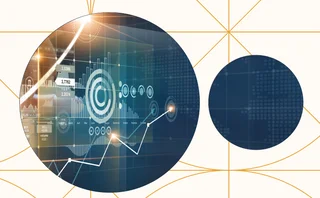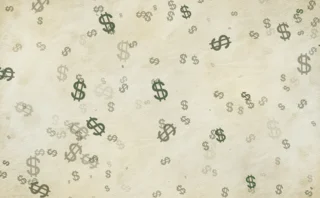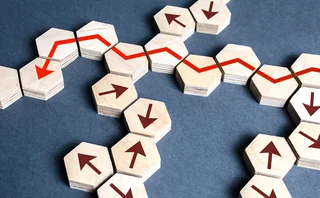
AIG fallout increases calls for counterparty disclosure

Beleaguered insurer American International Group (AIG) bowed to political demands that it release a list of its biggest bank counterparties on March 15, leading some analysts and commentators to press for greater counterparty risk disclosures by firms generally.
"Our decision to disclose these transactions was made following conversations with the counterparties and the recognition of the extraordinary nature of these transactions," said Edward Liddy, AIG's New York-based chief executive, in a statement. The list's publication also followed consultation with the US Federal Reserve, which has propped up the firm since an initial $85 billion was extended to it in return for a 79.9% stake on September 16 last year.
AIG's disclosure shows that between September 16 and December 31, 2008, AIG Financial Products paid out a total of $22.4 billion in collateral on credit default swap (CDS) trades with its top 20 financial counterparties. Just under half of this was concentrated between four firms, including Deutsche Bank, Goldman Sachs, Merrill Lynch and Societe Generale. Among AIG's other large CDS counterparties were Calyon, Barclays and UBS.
During the period, AIG also paid out $9.5 billion on its asset-liability management business and $15.2 billion on maturing debt, the firm revealed. In addition, it paid $5 billion into a special-purpose vehicle (SPV), known as Maiden Lane, through which AIG will wind-down its exposure to collateralised debt obligations of asset-backed securities (CDOs of ABSs). On November 10, the Fed announced it would contribute up to $30 billion towards the SPV, which was empowered to buy a maximum of $70 billion of CDOs of ABSs on which AIG wrote protection.
From its inception to the end of last year, the disclosure shows, the SPV paid out $27.1 billion to various counterparties - the majority of which went to Deutsche Bank, Goldman Sachs, Merrill Lynch and Societe Generale. Elsewhere, the firm disclosed that payments to a range of counterparties facing AIG's stricken securities lending business totalled $43.7 billion from September 18 to December 12, the top beneficiaries of which were Barclays and Deutsche Bank (see figure 1).
As well as invoking fury from the US Congress about the extent of payments to foreign counterparties, the moves also prompted some analysts to call for similar reports of large counterparty concentrations at other firms in order to temper systemic risk. "You could draw the parallel that we would expect a manufacturer to disclose to us if a significant proportion of its client base was a single business. If a significant proportion of its business was related to a single counterparty, that would be useful information too," says Brian Yelvington, New York-based strategist at research firm CreditSights.
Yelvington believes disclosure of exposures above a certain level could have drawn attention to the size of AIG's structured credit exposure, and would have made counterparties think twice about laying off the risk on similar transactions with the firm. The difficulty would be finding the right level at which such disclosures become necessary, he adds: "On the one hand, you want the information, and on the other hand, you don't want to hamstring the companies."
James Lam, Boston-based president of James Lam & Associates, agrees, saying a fuller disclosure of counterparty exposures would give market participants a better idea of counterparty risks and possible conduits for systemic risk. "If you have an exposure to counterparty A and you realise that counterparties B and C also have exposure to counterparty A, you would have a better idea of what your real exposure is," he remarks.
While some companies would be wary of giving away too much information in case market participants trade against them, Lam believes the idea of disclosing more about counterparty exposures is a practical one. "You could give broader information about your top 10 counterparties, and based on the exposures and credit ratings of your counterparties, you could give your expected loss and what your capital allocation might be, without giving away the exact details of transactions," he says.
With work towards central clearing of CDSs advancing in the US and Europe, others suggest build-ups of counterparty concentrations would be better supervised and curtailed by a central clearer. Such a clearing house would have the ability to set high margin requirements for sizable counterparty concentrations involving correlated transactions. But while clearing is being implemented for standardised single-name CDS and index trades, market participants say it is unlikely to ever encompass the kind of tailored deals that led to AIG's downfall.
Mark Pengelly.
See also:
Only users who have a paid subscription or are part of a corporate subscription are able to print or copy content.
To access these options, along with all other subscription benefits, please contact info@risk.net or view our subscription options here: http://subscriptions.risk.net/subscribe
You are currently unable to print this content. Please contact info@risk.net to find out more.
You are currently unable to copy this content. Please contact info@risk.net to find out more.
Copyright Infopro Digital Limited. All rights reserved.
You may share this content using our article tools. Printing this content is for the sole use of the Authorised User (named subscriber), as outlined in our terms and conditions - https://www.infopro-insight.com/terms-conditions/insight-subscriptions/
If you would like to purchase additional rights please email info@risk.net
Copyright Infopro Digital Limited. All rights reserved.
You may share this content using our article tools. Copying this content is for the sole use of the Authorised User (named subscriber), as outlined in our terms and conditions - https://www.infopro-insight.com/terms-conditions/insight-subscriptions/
If you would like to purchase additional rights please email info@risk.net
More on Credit risk
Finding the investment management ‘one analytics view’
This paper outlines the benefits accruing to buy-side practitioners on the back of generating a single analytics view of their risk and performance metrics across funds, regions and asset classes
Revolutionising liquidity management: harnessing operational intelligence for real‑time insights and risk mitigation
Pierre Gaudin, head of business development at ActiveViam, explains the importance of fast, in-memory data analysis functions in allowing firms to consistently provide senior decision-makers with actionable insights
Sec-lending haircuts and indemnification pricing
A pricing method for borrowed securities that includes haircut and indemnification is introduced
XVAs and counterparty credit risk for energy markets: addressing the challenges and unravelling complexity
In this webinar, a panel of quantitative researchers and risk practitioners from banks, energy firms and a software vendor discuss practical challenges in the modelling and risk management of XVAs and CCR in the energy markets, and how to overcome them.
Credit risk & modelling – Special report 2021
This Risk special report provides an insight on the challenges facing banks in measuring and mitigating credit risk in the current environment, and the strategies they are deploying to adapt to a more stringent regulatory approach.
The wild world of credit models
The Covid-19 pandemic has induced a kind of schizophrenia in loan-loss models. When the pandemic hit, banks overprovisioned for credit losses on the assumption that the economy would head south. But when government stimulus packages put wads of cash in…
Driving greater value in credit risk and modelling
A forum of industry leaders discusses the challenges facing banks in measuring and mitigating credit risk in the current environment, and strategies to adapt to a more stringent regulatory framework in the future
Accelerating the evolution of credit decisioning and modelling
Anthony Mancuso, director, global head of risk modelling and decisioning at SAS, explains the importance of developing a fully capable credit modelling lifecycle to empower non-specialist personnel, and offers insight into its own solutions to this end,…
Most read
- Breaking out of the cells: banks’ long goodbye to spreadsheets
- Too soon to say good riddance to banks’ public enemy number one
- Industry calls for major rethink of Basel III rules







